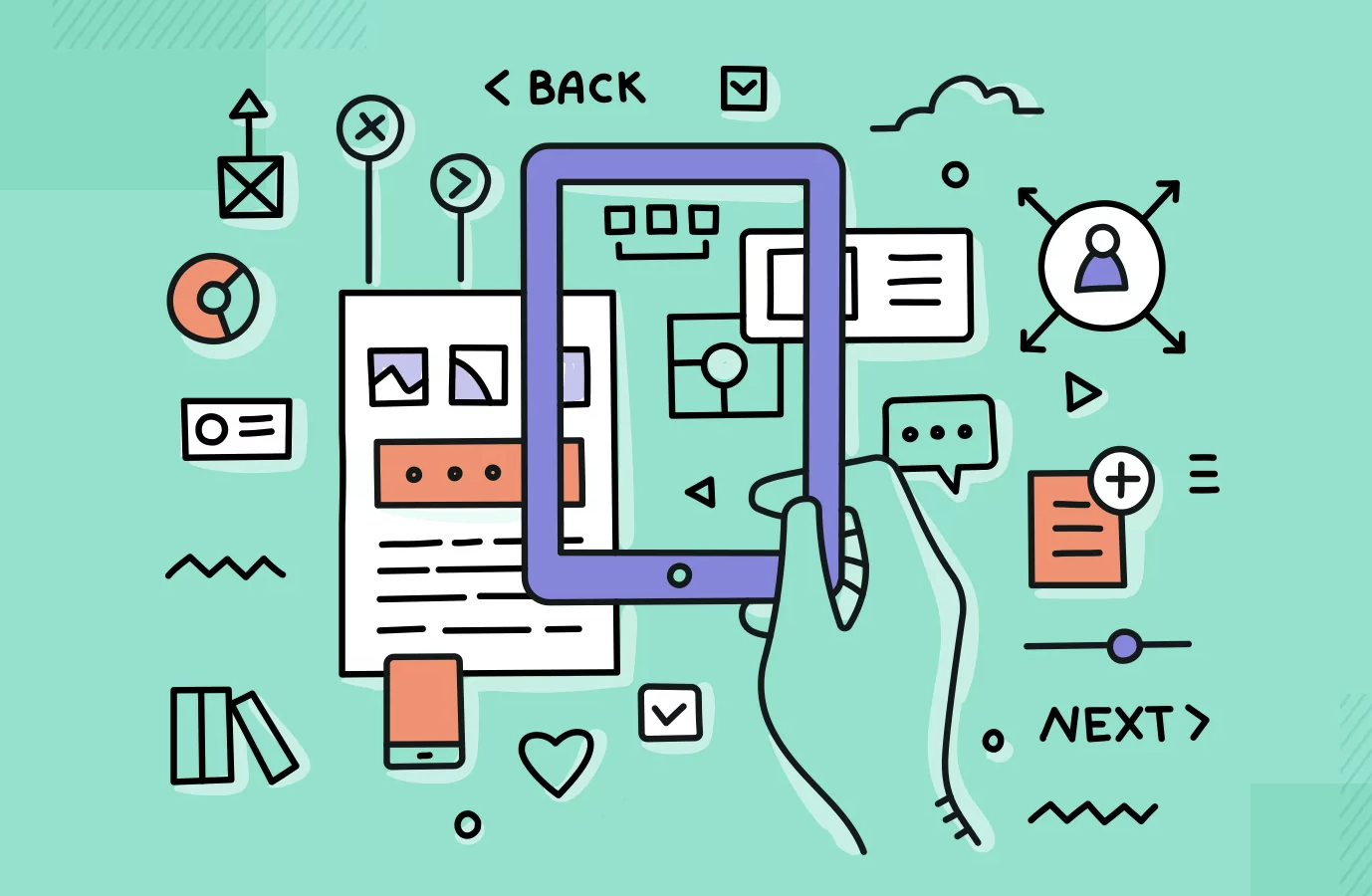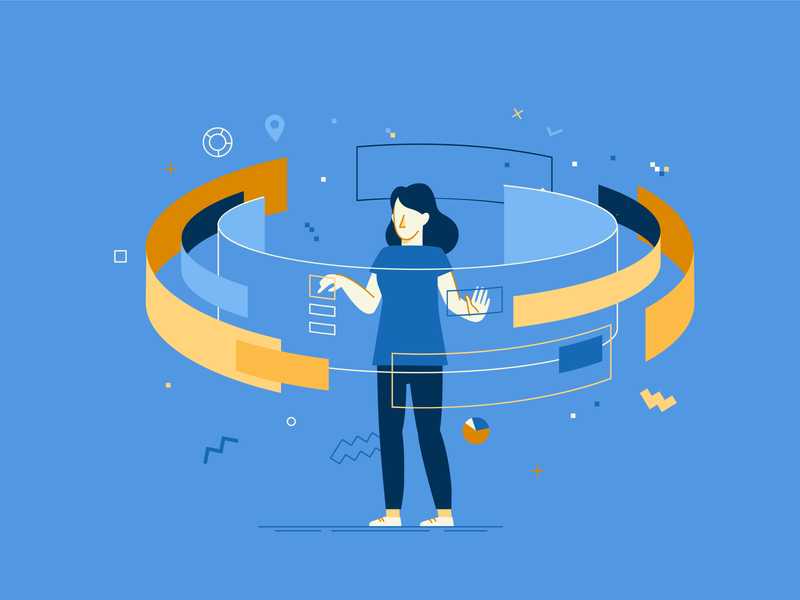Free UX Design Course
Dive into UX design with our free starter course. Transform your creative ideas into user-friendly solutions.
The demand for consistent, premium quality design work, with applications ranging anywhere from outwards facing customer experience curation to app design, to internal vendor systems building, is currently exploding—with respect to both user experience designers and user interface designers. If you are actively pursuing a career in UX, you have anywhere from five thousand to twenty-five thousand job openings across the globe open to you at any given time—and that’s not due to change any time soon.
As an increasing amount of daily operations, for companies large and small, are taken on by teams working remotely, the need for tech-based solutions that are consistently user-friendly, reliable, and intuitive is more relevant than ever. If the goal of the designer is to turn research into people-friendly experiences and to balance the focus between user needs, expectations, and systematic feedback—it is absolutely crucial to keep track of the shifting landscape in design as well as understanding the actual needs of your users.
As a UX designer, your job is to advocate for the end user or customer. Whether you’re designing a new product, developing a new feature, or making changes to an existing product or service, you have to consider what’s best for the user and their experience. Nowhere is the user experience so immediately affected as the design of an application’s user interface—making it crucial for UX designers to also have a handle on UI skills. In fact, InsideDesign reports from its research across job sites that 66% of UX designer job ads request UI skills. Having a strong grasp of UI skills as a UX designer will give you the edge that helps take your designs from being functional to being beautiful.
1. UI Skills Empower Designers to Better Understand Users
Throughout your path toward a career in user experience design, you have no doubt discovered that there is no lack of confusion about what exactly the difference is between UX design and UI design—perhaps even on the part of your potential hiring managers and peers. While the meanings of UX and UI might imply that they are related design disciplines, and they do share certain general principles, the reality is that they are different in nature. UI design is more explicitly concerned with the visual properties of a product as well as the overall feel it conveys, while great UX is concerned largely with the overall user reception of the product.
However, increasingly individuals being hired into UX design roles are encouraged and often required to possess, at the very least, fundamental interface design skills, particularly in the area of visual design skills. Though the fundamental responsibilities between the roles differ, a significant portion of job opportunities in UX design require UI design skills, and many companies advertise UI and UX design as a single role, with the designer working on both the conceptual part of user interactions and subsequently transferring that knowledge directly into their own UI design.
In fact, a designer could use this as an opportunity to broaden their skillset, land better design jobs, or broaden the scope of their career options. But even if you are not being asked to do two completely separate jobs simultaneously, there is a huge amount of value in understanding how what you build is ultimately being presented to the user, and practical experience with both disciplines will help make you a better designer.
2. UI Skills Lead to Improved App Accessibility

When a person gets into a car and starts driving, the experience of going from Point A to Point B in that vehicle, the quality of the engine, the comfort, the function—that is UX design. The way the car looks, the location of the objects on the dash, the aesthetic of the vehicle’s interior that intuitively guides the driver subconsciously—that is UI design.
If you are going to design a car from scratch, you don’t begin gathering the materials and constructing the engine block until you know what it is going to look like when you get into the driver’s seat and hit the gas. Likewise, as many organizations have abandoned the older top-down procedural methods of building applications—designs, and the processes used to build them out, are becoming more responsive and fluid.
One of your number one priorities as a designer is accessibility, and because a significant majority of people are more adept at learning visually, you won’t get very far without being well versed in visual communication. Refreshing your UI design skills will help you when you need to create mockups and prototypes that have a chance of making a tangible impact on users.
Get To Know Other Design Students
Mireya Luna
Student at Springboard UI/UX Design Bootcamp
Arin Soukoule
Design Experience Analyst at Accenture Interactive
Jeffrey Surban
UX Designer at Citi
3. A Strong UI Makes for Smarter, More Impactful Technology
This design focus is more complex than simply picking the right color palette from a series of swatches or knowing what button style is the most trendy right now. Having a working knowledge of proven design principles such as visual hierarchy, typography, reading patterns, and Gestalt principles really do matter when it comes to how your users are guiding themselves through your design.
To add to these complexities a growing amount of business, both personal and commercial, is being conducted via smartphone screen. Designers and stakeholders alike want to reach the same usability standards and rates of success as before, but now while only being able to utilize a fraction of the space. In addition to this, voice-activated user experiences becoming popular poses another exploratory obstacle for designers. Demand in the market, new consumer expectations, and the rapid development of artificial intelligence technologies have left brands with few choices but to include voice-based features as part of their given product.
As a result of the reduced space of smartphone screens, the utilization of gesture technology, and the increasing importance of multi-platform utility, each individual component becomes even more important in a design. During the collaboration process between UX and UI designers, these new challenges make it even more crucial for UX designers to have a solid grasp of UI concepts (and vice versa) when they approach their designs.
4. A Combined UX/UI Skillset Takes Products From Functional to Beautiful

It’s likely that during your time pursuing a UX position, you have come across the concept of the user journey. The feelings that users have while interacting with a product, whether positive, negative, or apathetic, have a huge impact on whether users choose to use a product. That’s why the concept of the user journey is a cornerstone of user experience design. The path that the user follows when interacting with a product has a direct impact on the user experience.
Similarly, the path that designers use to arrive at the finished product is going to have a big impact on the quality. If your user research is conducted without care, or if there is a conflict between the functionality of your GUI (Graphical User Interface) and the designer’s stylistic instincts, a buildup of these communication errors can be terrible for a design rollout. It is important to empathize with your fellow designers (no matter their specialty) just as much as it is important to empathize with your users. Staying curious about what your peers are working on goes a long way in becoming a more effective UX designer, even more so than gaining proficiency with Photoshop, Sketch, or Illustrator.
As a UX designer, effectively incorporating UI skills into your work will be the extra element that takes your designs from being good to be memorable and impactful. Taking the time to expand outside your immediate role responsibilities, reaching out to new audiences with your research, and exploring unexpected solutions in an open-ended way, ultimately allows creative UX designers to solve problems in innovative ways while avoiding some of the typical constraints of functionality. These skills can empower you as a designer to not simply help users accomplish their goals but to make emotional connections around genuinely ensuring to solve their pain points.
Since you’re here…
Not sure where you’ll find the time to learn UX and UI skills? We’re here to help. Our fully flexible UI/UX Design Bootcamp takes just 12-15 hours a week over 6 months and is proven to increase student salaries by $25,033 on average per annum. We’ve helped over 10,000 students make the switch without quitting their day jobs – shouldn’t you be next? Jump in today with our free design fundamentals course.






